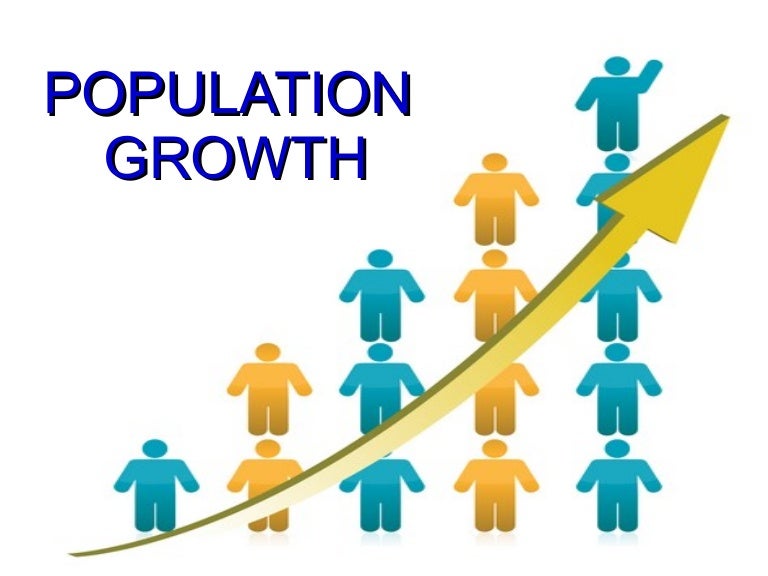Introduction:
Pakistan keeps on confronting numerous wellsprings of interior and outside struggle. While rates of homegrown illegal intimidation have decreased to a limited extent because of measures taken by the Pakistani state, radicalism and bigotry of varying kinds have developed, and all of these are current issues being faced by Pakistan.
There is some acknowledgment by the expression that, rather than just dynamic reactions, all-encompassing counterterrorism approaches are expected to balance this pattern. The developing radicalism has been filled with a thin vision of Pakistan’s public character, compromising the nation’s possibility for social union and stability.
The failure of state foundations to address current issues in Pakistan and dependably give serene ways of settling complaints about the current problems of Pakistan has urged gatherings to look for brutality as an authentic other option.
Current Issues in Pakistan:
In the 21st century, as the world has globalized, so have the issues. The COVID-19 pandemic is one of those various worldwide issues and Pakistan has fallen victim to it because of the idea of the issue.

Notwithstanding, it has been extremely difficult to handle it considering the way that Pakistan’s demeanor is to make humor out of any specific circumstance. At a point when the whole world was under lockdown, the country of Pakistan was caught up in having picnics in the rocky regions.
While a large portion of the states is contesting the antibody discretion, individuals in Pakistan are not, in any case, able to get them immunized because there is a misunderstanding that chips are being embedded through immunization and they will most likely not make due the previous two years. While Pakistanis are not following the rules, they are dismissing the fact that Pakistan is an emerging country.
Surprisingly, the pandemic has radically impacted the global economy, and it has primarily affected Pakistan, with the monetary disruption worsening an already existing emergency. The public authorities have defined and executed some relief measures, but they are insufficient to counter the effect of the pandemic.
So there is plausible logical aftermath of a close emergency in Pakistan’s economy on the country’s mixed political framework that is overwhelmed by the military. Pakistan is confronted with various serious difficulties that have been neglected for a long time.
The effect of these advancement challenges began becoming apparent in straight augmentations during the 1990s. However, their effect is presently agglomerating. A simple picture of the fundamental ones is introduced underneath.
A surge in Population:
One of the current issues in Pakistan is the increasing population because Pakistan adds more than 4 million individuals to its populace every year, at the current development rate. The yearly expansion is identical to the joined populace of forty of the tiniest nations in the world, or what could be compared to the consolidated populace of Latvia, Iceland, and Slovenia every year.

The country’s population has multiplied over the most recent long time, beginning around the last decade of the twentieth century. The high fertility rate in Pakistan has declined at a humbler speed than the vast majority of its agricultural nation peers and is pushing population development.
The pace of increment is indefensible. The tension fast population development is applying to metropolitan thickness, public administrations and actual foundation, personal satisfaction, assets, accessibility of water, and so forth, is turning out to be progressively clear as time passes.
It is pushing a dynamic of destitution, low quality of life, water pressure, contamination, and natural corruption that is impractical.
Water and Power Issues:
With other political issues in Pakistan, its yearly per capita water accessibility has declined to almost 1,000 cubic meters per year — at pretty much the shortage limit. In 2009, the per capita water accessibility in the nation was around 1,500 cubic meters. The rising water shortage is the most existential of the relative multitude of difficulties confronting Pakistan.

As per the World Resources Institute’s “Reservoir Conduit Water Risk Atlas’, Pakistan’s position is fourteenth as far as nations confronting amazingly high water hazards. A huge part of the decrease in per capita accessibility is because of population development and urbanization.
And going on like this, it is normal that per capita water accessibility will keep on dropping sharply unless an earnest and purposeful move is made to get control over the runaway development in the populace, advance effective utilization of water, and address the absence of water stockpiling limit.
The effect of water pressure won’t just be possibly crippling because of an absence of accessibility for regular use, yet additionally because of its possibly enormous financial effect.
The country’s economy is intensely water-dependent, with Pakistan’s water force rate — how much water, in cubic meters, utilized per unit of GDP — thought to be the world’s most elevated. At the end of the day, no economy on the planet is more water-concentrated than Pakistan’s.
To complicate matters further, no large country seems to have put less into water stockpiling than Pakistan. Its water stockpiling limit is under 30 days, while India stores around 200 days of water in its major peninsular waterways, and the US can hold 900 days of stream run-off, as indicated by the World Bank.
The nation has been confronting a devastating power emergency since the 1990s, which has deteriorated since around 2007. Extended engineered power outages the nation over have cost more than two percent of GDP every year in lost results alone, prompting sickly development in ventures and occupations, while hindering industry just as commodities.
The idea of the emergency has developed throughout the years from one of constant power supply shortfalls to one where there is overabundance introduced limit, however insufficient income in the framework to run it.
The last option brings about the supposed ’round obligation issue. Round obligation, or the income deficit in the power area from the non-installment of commitments by customers, circulation organizations, and the public authority, has expanded from 1.6pc of GDP in 2008 to 5.2pc of GDP as of the end of June 2020. It has ascended since to Rs2,300bn as of the end of November.
The round obligation issue undermines the practicality of the country’s energy production network. It has additionally weakened Pakistan’s financial administration and forced restrictive freedom costs as far as pre-empting government spending from basic use on foundation and social spending.
Given its linkages with the remainder of the economy and enormous negative externalities, related to its extent and pattern, this issue can appropriately be named one of Pakistan’s first macroeconomic difficulties.
Fragile Economy:
All roads lead to the monetary system, Pakistan’s most fragile connection. The state’s establishments are based on its monetary limit. A large part of the close-term financial shakiness has been driven by a worldwide item value blast.
Notwithstanding, it is critical to perceive that the inflationary tempest immersing Pakistan is undeniably huger than in other friend economies.
A lot of this dissimilarity has to do with an absence of forward-looking agrarian arrangements in Pakistan and useless business sectors in key wares like wheat, where the public authority intercedes across the worth chain.
Notwithstanding a majority rule framework and irregular decisions, the helpless fragments of society in Pakistan stay defenseless and have little ability to impact approaches in manners that will assist them with the excursion of neediness.
Productivity:
From the farming area to industry to export firms, from the public area to administration, Pakistan faces a tremendous efficiency challenge.
As per ILO assessments, somewhere in the range of a decade, yield per specialist became under 20 percent on account of Pakistan, contrasted with 86 percent expansion in China, 68 percent in India, and 50 percent in Bangladesh.
An enormous contributor to the issue is that because of low instructive accomplishment, the labor force structure is overwhelmingly slanted towards incompetent work. Further developing admittance to instruction and results in the area, while increasing endeavors to expertise the workforce, are critical needs.
Governmental issues:
Unsettled issues in the political construction, for example, power-sharing, focus region relations, dynastic and degenerate legislative issues, the shortfall of responsibility by any partner to authentic established majority rules system, and, institutional balanced governance, are on the whole ruining the advancement way and the battle against rising disparity.
The test for Pakistan isn’t simply ‘regular’ governmental issues yet ‘personality’ legislative issues as well. Assuming that Pakistan’s endeavors to once again introduce pluralism regarding its minorities and minimized networks are fruitful, it will go quite far in creating a steady country and a dynamic of advancement.
Terrorism and Radicalization:
All of this is happening when there has been a critical increase in dread assaults in the previous ancestral spaces of Pakistan. As of October 22, 169 security personnel had been killed in fear assaults across the nation up until this point this year, setting 2021 on target to be the deadliest year for Pakistani powers beginning around 2017.
Khan’s public remarks affirming conversations for certain groups of the Tehreek-e-Taliban Pakistan have additionally planted disarray given the way that the TTP has expanded the recurrence of its assaults on Pakistani security powers.
Reports likewise show that the United States and Pakistan are attempting to arrive at an arrangement that would permit the United States to utilize Pakistani airspace “to lead military and insight activities in Afghanistan.”
Human Rights:
Prime Minister Imran Khan’s administration increased its crackdown on basic voices from the media, common society, non-governmental associations, and political resistance in 2021. The specialists regularly use draconian counterterrorism and subversion laws to scare tranquil pundits.
Sacrilege-related viciousness against strict minorities, cultivated to some degree by government mistreatment and unfair laws, has expanded. Law implementation organizations complete self-assertive detainments and extrajudicial killings without risk of punishment.
The specialists have neglected to set up satisfactory security or take responsibility for maltreatments against ladies and young ladies, including alleged “honor killings” and constrained marriages.
Conclusion:
These advancements are meeting up to project a shadow over the fate of the PTI government. Only half a month prior, government questioners had absolute trust in their capacity to quickly develop the economy in 2022, regain prominence among the majority, and keep up with the institutional agreement important to win the impending general decisions.
These questioners would certainly express that the main practical choice was Khan’s Pakistan Tehreek-e-Insaf (PTI) party and that the top state leader would get back to drive with a greater command in 2023.
This certainty has since disintegrated and may break before long. While most government agents are communicating with mindful idealism that things will pivot before long, the truth is that these are rough occasions for the PTI.
Inflation is powering mass discontent, especially among the metropolitan working class, a key citizen base; political elites, particularly the individuals who have progressed in their vocations by perusing the moving breezes from Rawalpindi, are hotly recalibrating their political radar.
Resistance pioneers have been floated by the difference in watch in Balochistan, where the public authority associated boss priest has been constrained out, and the breaks in the post-2018 common military coalition.
Government representatives might just be correct that this is a fundamentally nonsensical uproar, and the PTI might move right out of these tempestuous occasions, outstandingly because other political decisions might be less attractive.
However, the people who are knowledgeable in Pakistan’s set of experiences might contend that transient occasions have generally overturned the norm inside only months and achieved exceptional changes that are numerous inside the passageways of force excused as dreams.
Hira Naz - a graduate of International Relations. She is interested in political economy and human rights. She observes and analyzes the socio-political events in contemporary global arena.






